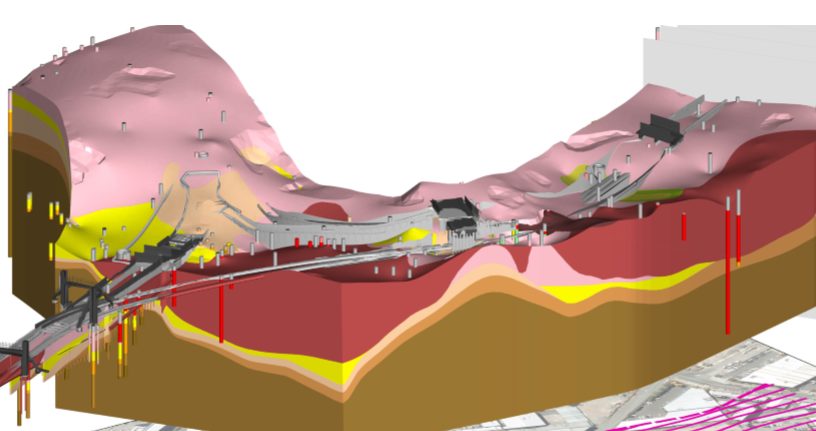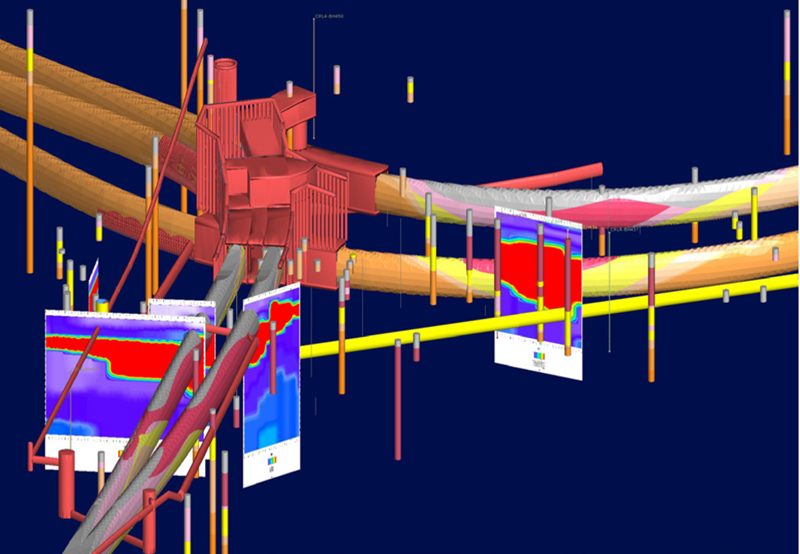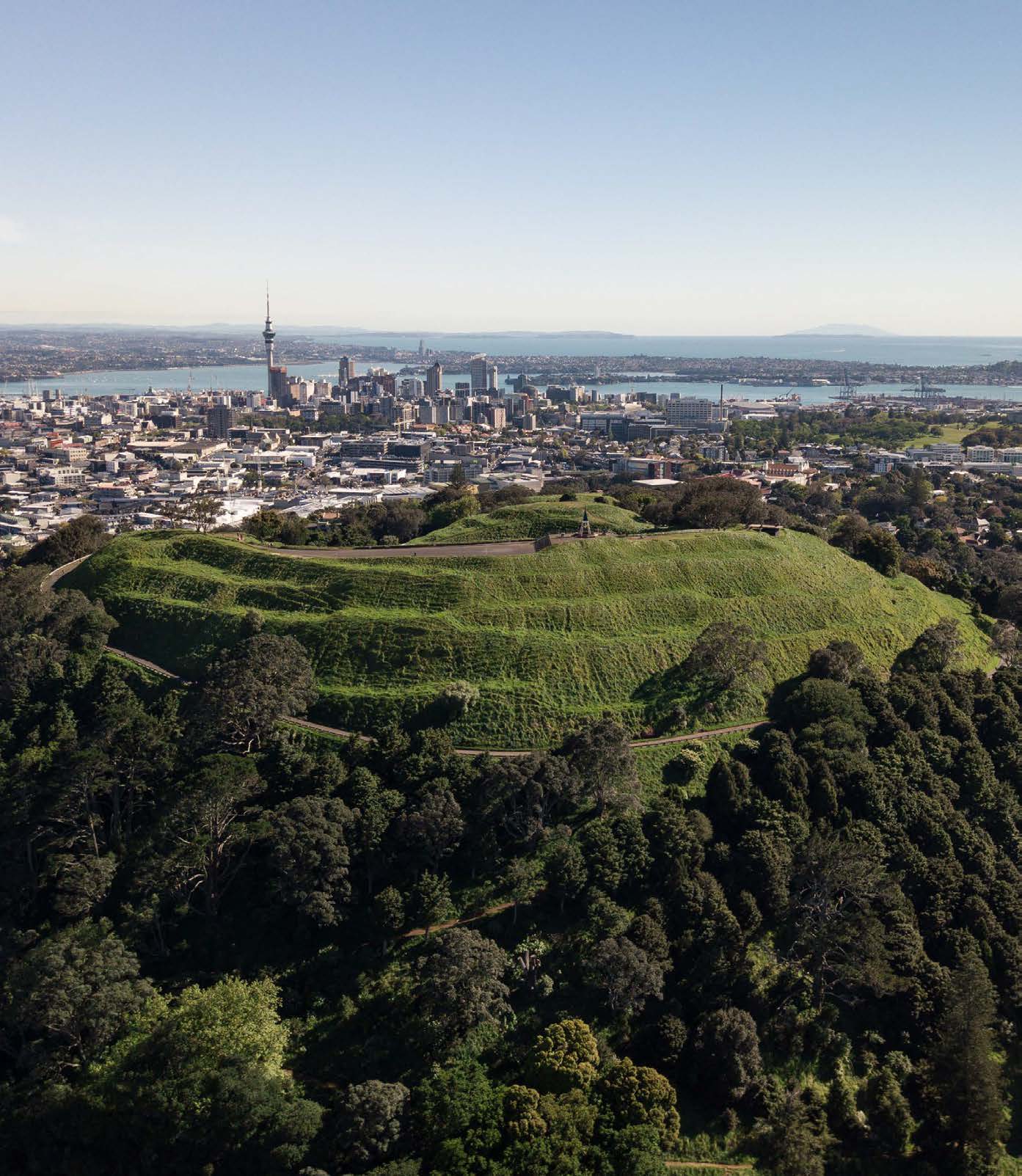Auckland’s City Rail Link (CRL) project is the largest infrastructure project ever to be undertaken in New Zealand. It is a 3.45km twin-tunnel underground rail link up to 42 metres below the city centre, transforming the downtown Britomart Transport Centre into a two-way through station that better connects the Auckland rail network.
Infrastructure projects this size are challenging enough, without the added complexity of building them in a city located on a volcanic field.
Embarking on a massive project like the CRL through an area of complex geology, including volcanoes, requires a very clear assessment of the ground conditions. This demanding task fell on the shoulders of global engineering and infrastructure advisory company, Aurecon.
To help attain and communicate this detailed technical analysis, Aurecon used Seequent’s 3D geological modelling solution, Leapfrog Works, which is specifically designed for the Civil Engineering and Environmental industries.
Helping reduce risk
Critical in any major infrastructure project, Aurecon needed to carry out detailed technical analysis of the ground conditions to identify the risks and then clearly communicate and mitigate these risks to the consortium of engineers and architects involved.
Philip Kirk, Geotechnical Team Leader, Aurecon, says, “We didn’t want the construction team to encounter unexpected ground conditions that would compromise or delay the project. We had to get it right.”
Seeing the complex volcanic geology
To make informed decisions on structural design, services locations and construction methods, engineers and construction teams needed to ‘see’ how these ground conditions interacted. Using Leapfrog Works, Aurecon’s ground engineering and engineering design colleagues were able to readily visualise in 3D and were quickly surprised by how effective a communication tool Leapfrog Works was.
A key feature in the development of the industry-led solution has been its ability to combine geological models with engineering designs. Therefore, Works not only aided communication with stakeholders but more importantly enabled Aurecon to get the design right from the start.
“Leapfrog Works has been an instrumental tool to support our ground engineering team, who are the interface between science and engineering,” says Philip. “Geologists need to be able to communicate the uncertainty in the ground conditions in a way that the engineers understand, relevant to the design.”

Helping reduce risk
Critical in any major infrastructure project, Aurecon needed to carry out detailed technical analysis of the ground conditions to identify the risks and then clearly communicate and mitigate these risks to the consortium of engineers and architects involved.
Philip Kirk, Geotechnical Team Leader, Aurecon, says, “We didn’t want the construction team to encounter unexpected ground conditions that would compromise or delay the project. We had to get it right.”
Seeing the complex volcanic geology
To make informed decisions on structural design, services locations and construction methods, engineers and construction teams needed to ‘see’ how these ground conditions interacted. Using Leapfrog Works, Aurecon’s ground engineering and engineering design colleagues were able to readily visualise in 3D and were quickly surprised by how effective a communication tool Leapfrog Works was.
A key feature in the development of the industry-led solution has been its ability to combine geological models with engineering designs. Therefore, Works not only aided communication with stakeholders but more importantly enabled Aurecon to get the design right from the start.
“Leapfrog Works has been an instrumental tool to support our ground engineering team, who are the interface between science and engineering,” says Philip. “Geologists need to be able to communicate the uncertainty in the ground conditions in a way that the engineers understand, relevant to the design.”

Saving time and money
Using Leapfrog Works, Aurecon were able to identify key opportunities in the reference design, ultimately saving time and money over the entire project’s course. This included, for example, the revision and optimisation of ground improvement works at the Water Street shaft to mitigate ground risks.
The 3D geological model also proved invaluable in clearly communicating ground risks to both stakeholders and contractors during the procurement phases, for much better time and cost certainty. Leapfrog Works’ dynamic abilities enabled immediate updating of the ground model based on the live data coming from the onsite shaft borehole drilling, saving days and further ensuring structural accuracy. This dynamic modelling helps keep decision making fluid and on track with the very latest findings.
“We hope this is just the start of using 3D visualisation to communicate risks within a project and to help clients and contractors to make sense of them. This is the power of combining technical eminence and digital technology.”
Construction of the City Rail Link is underway with the completion date set for early 2024.
Read the full Aurecon CRL case study here.





